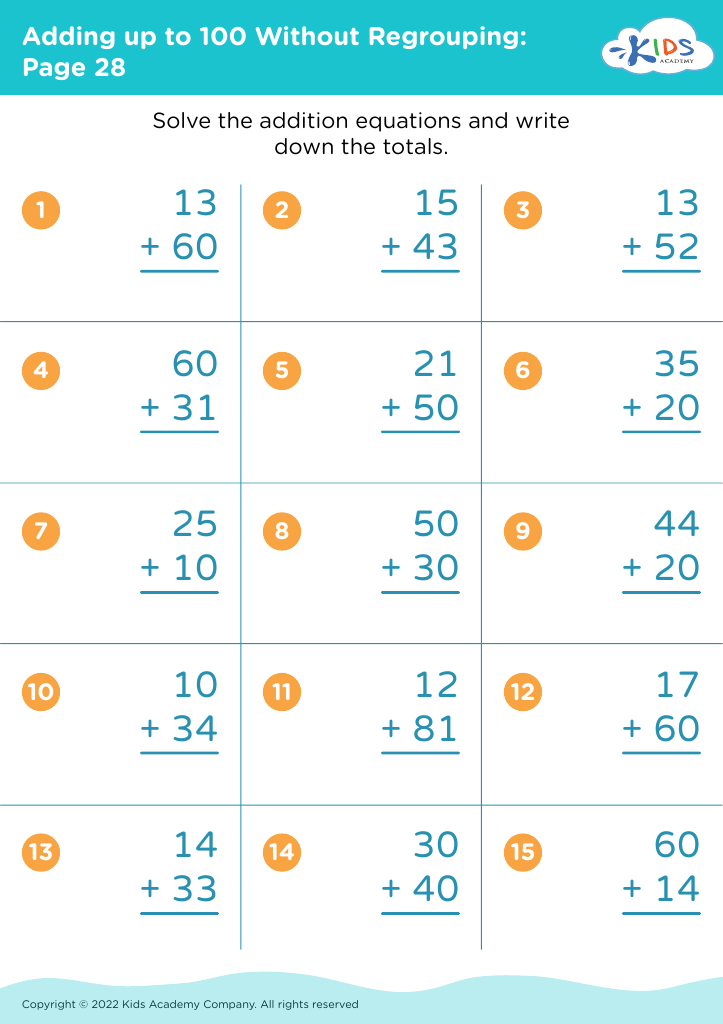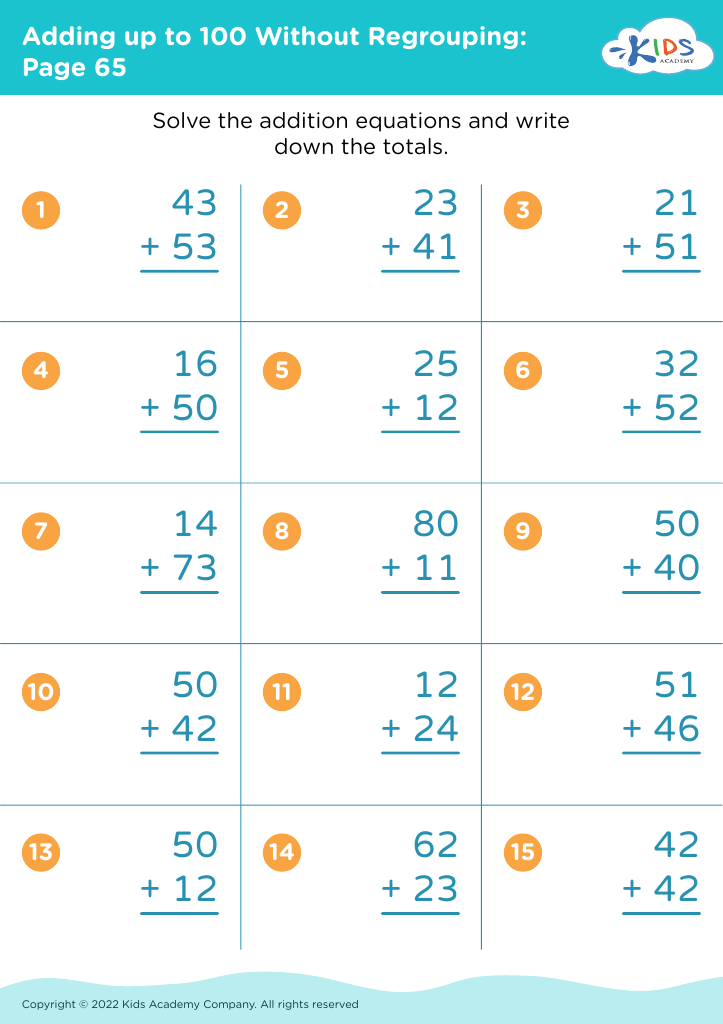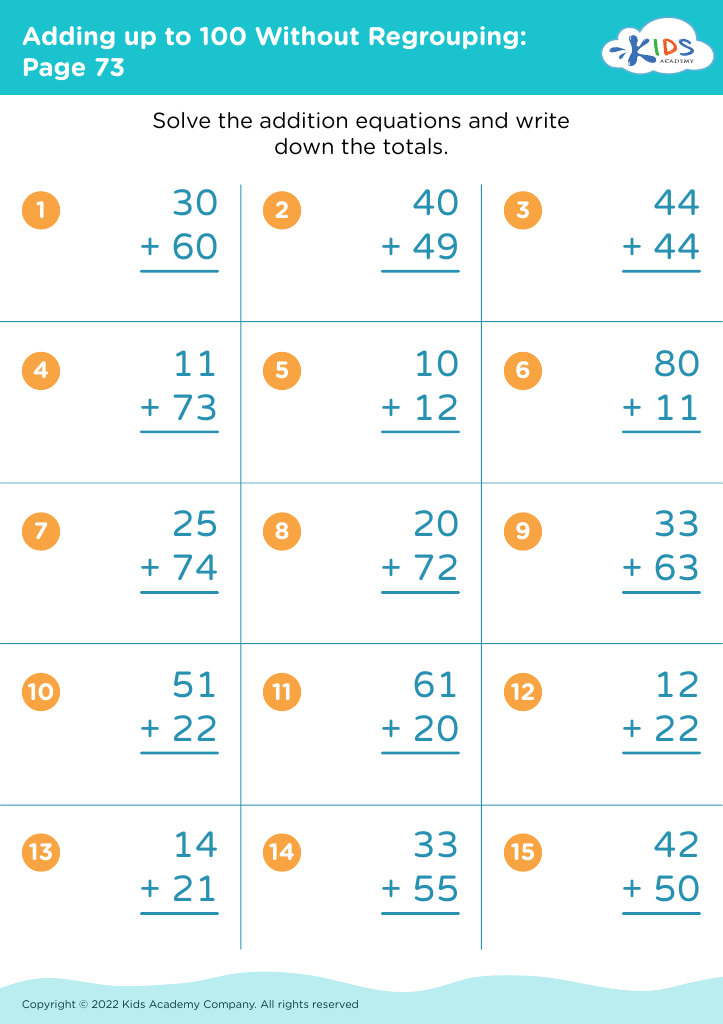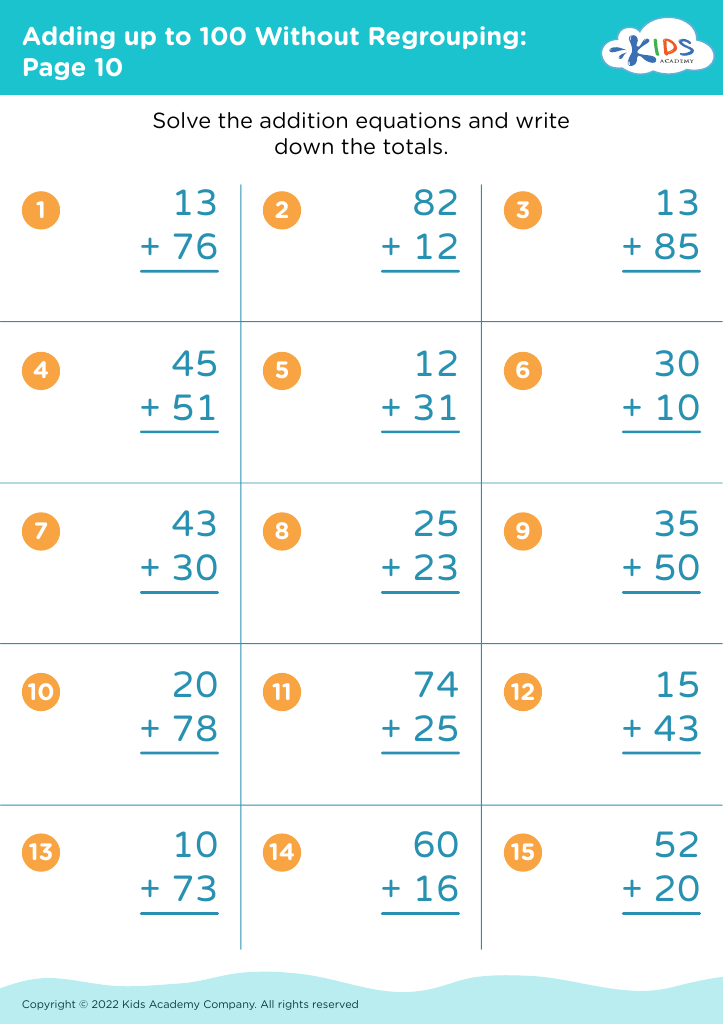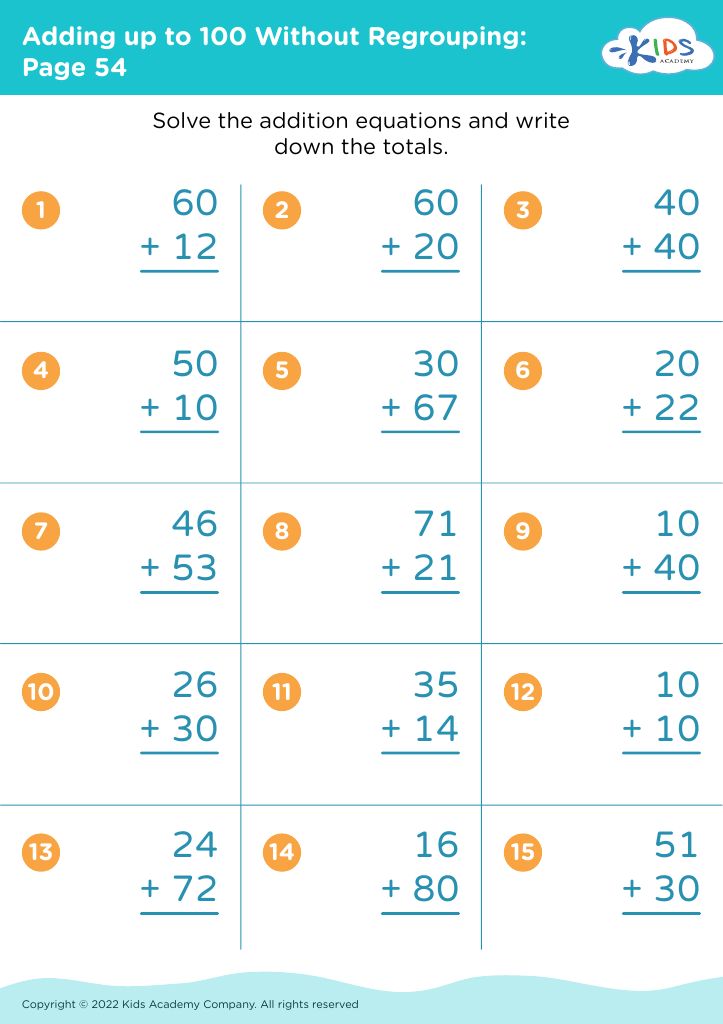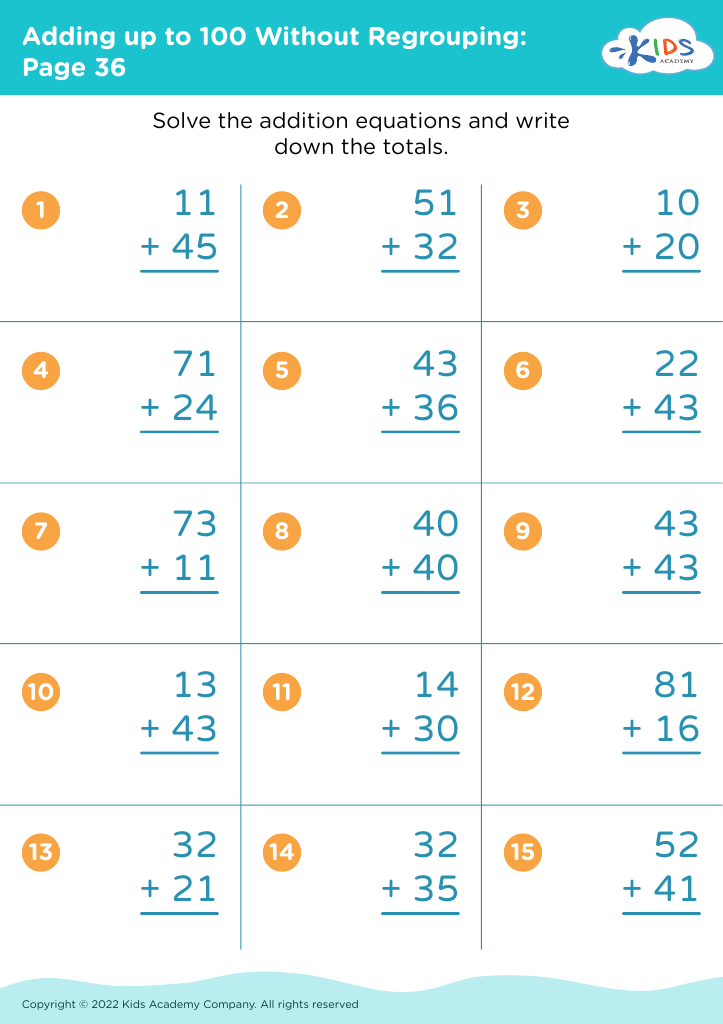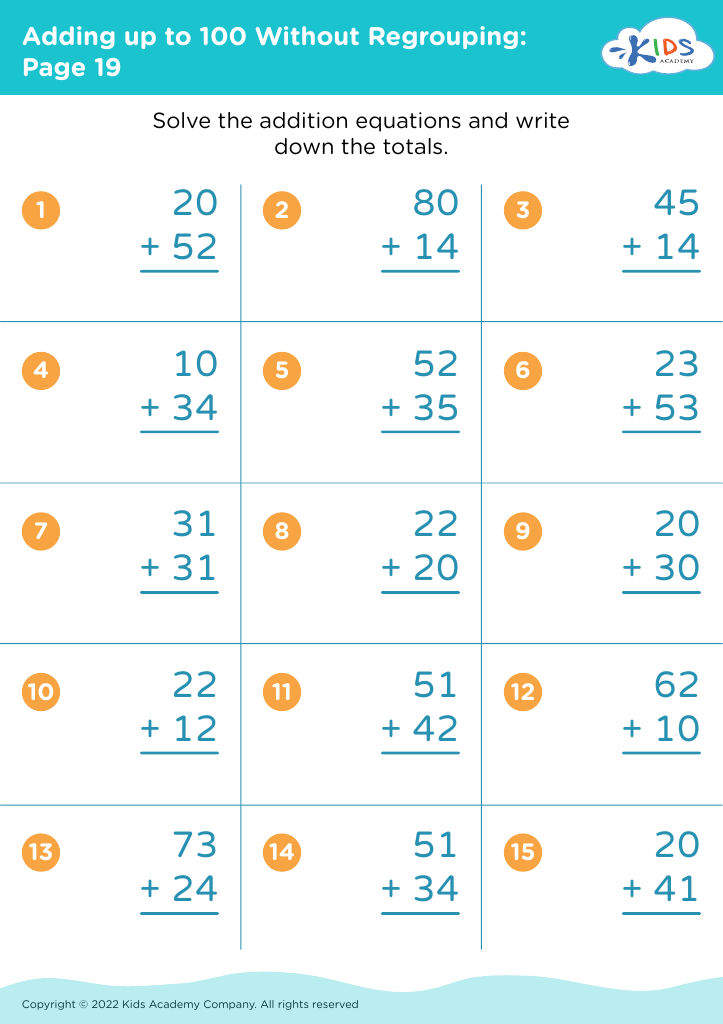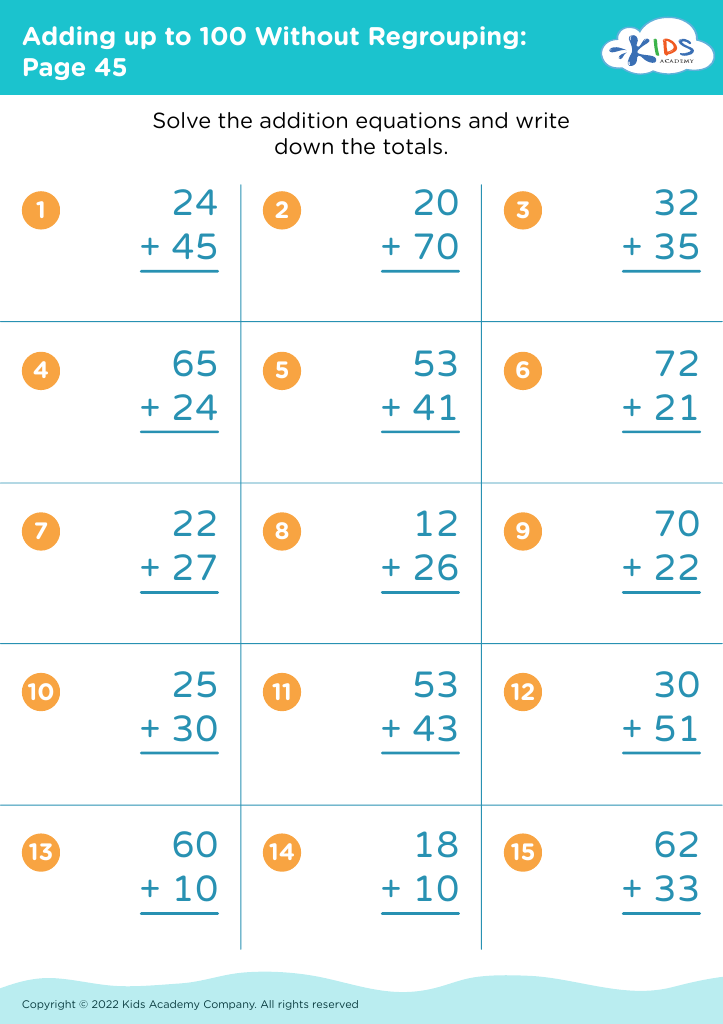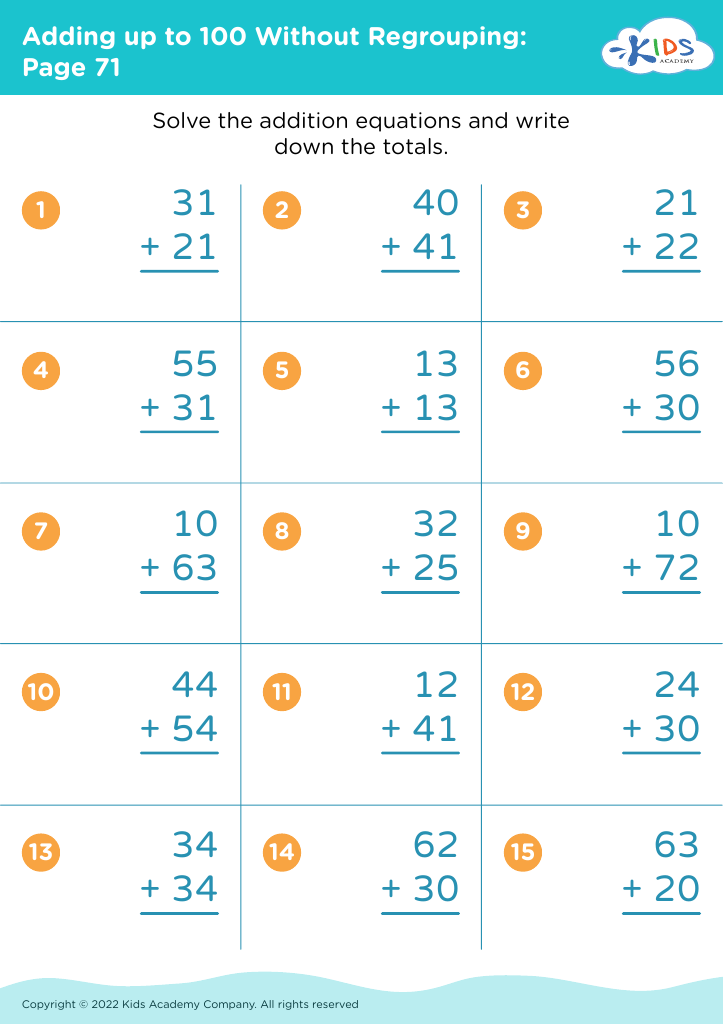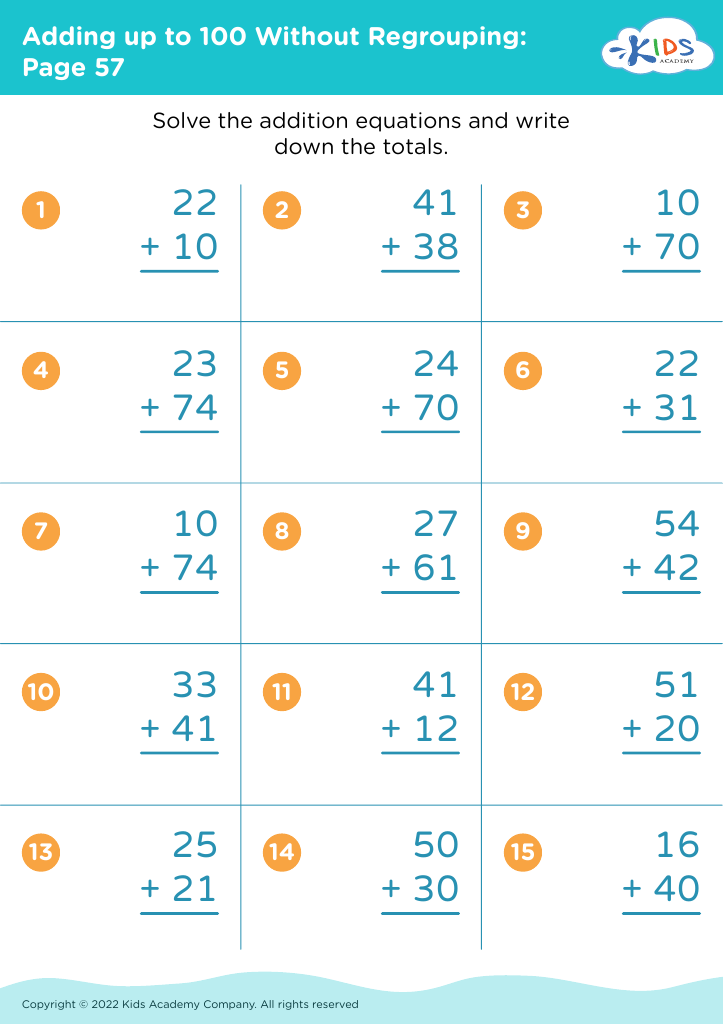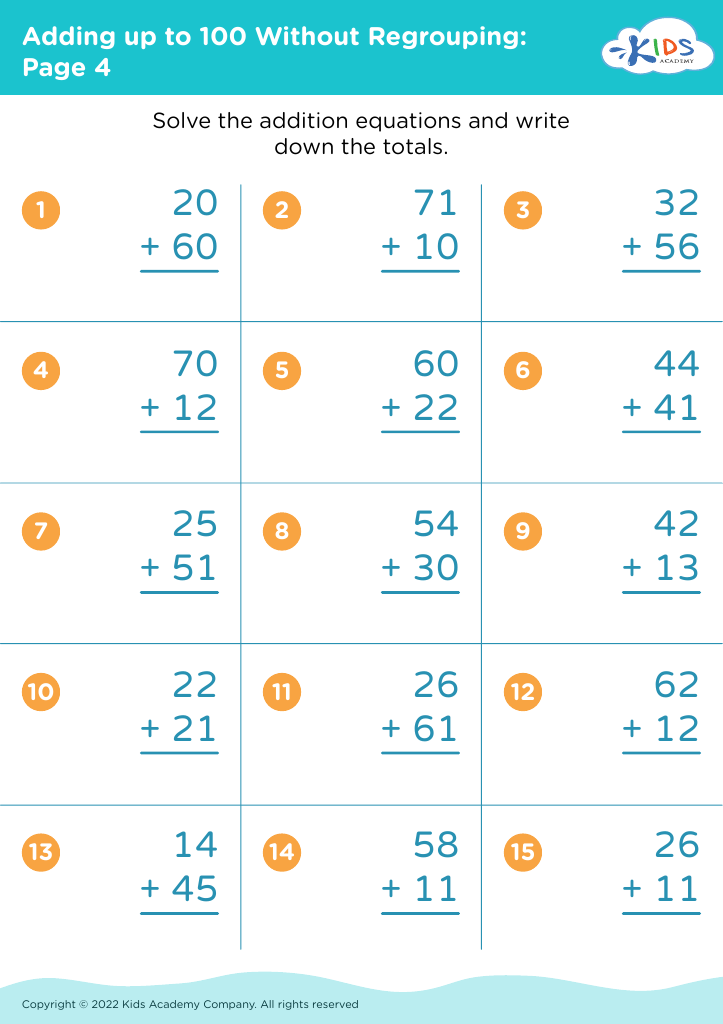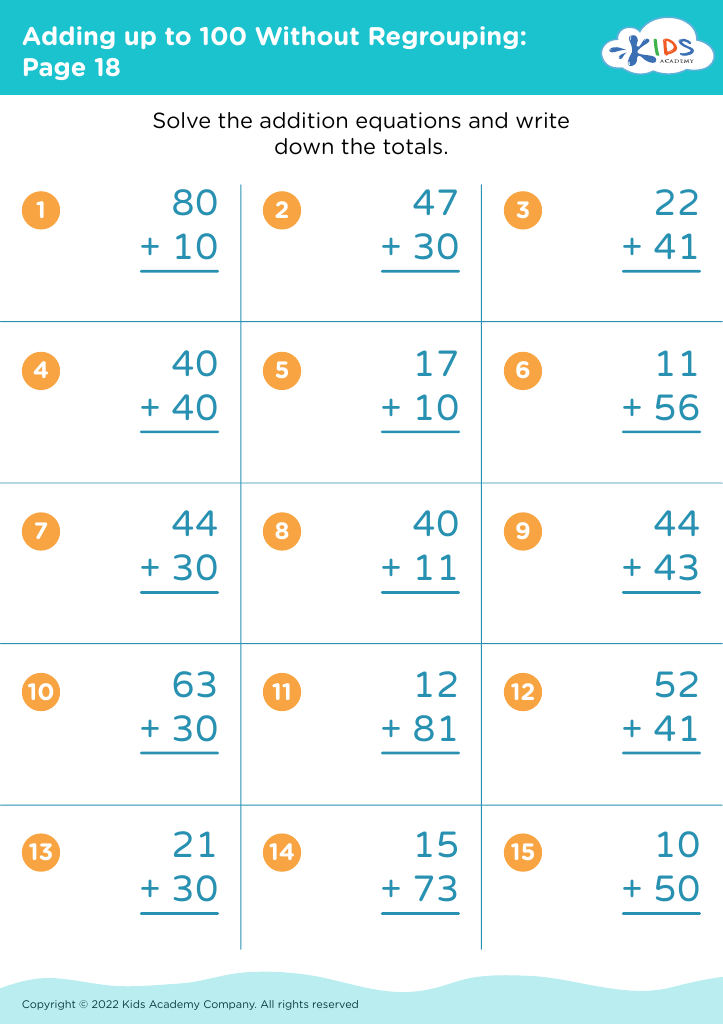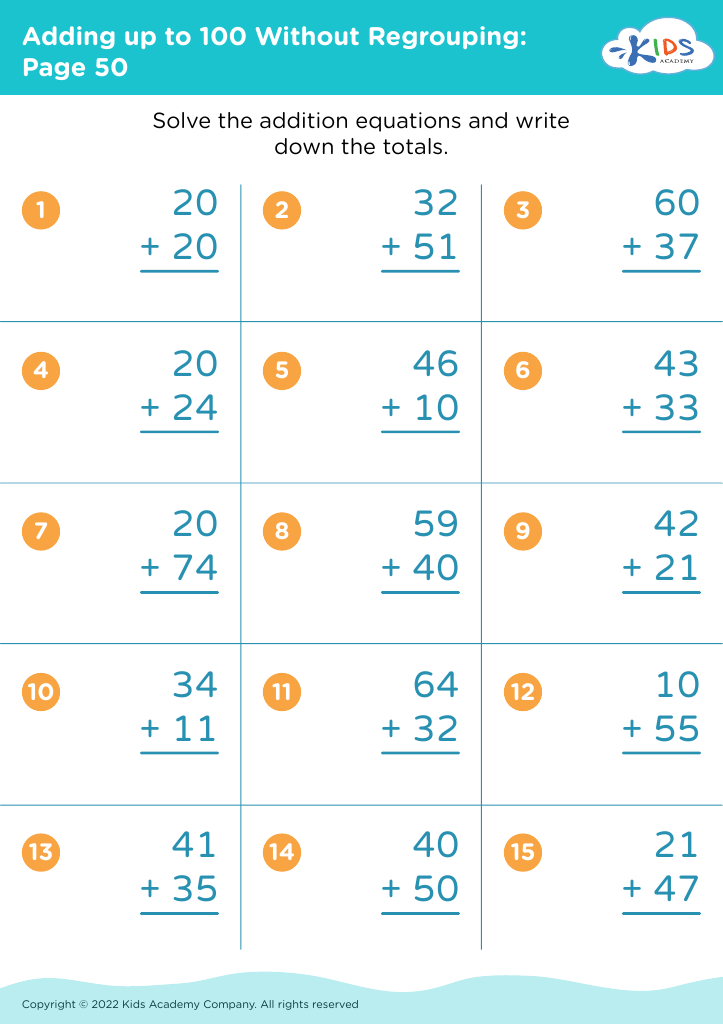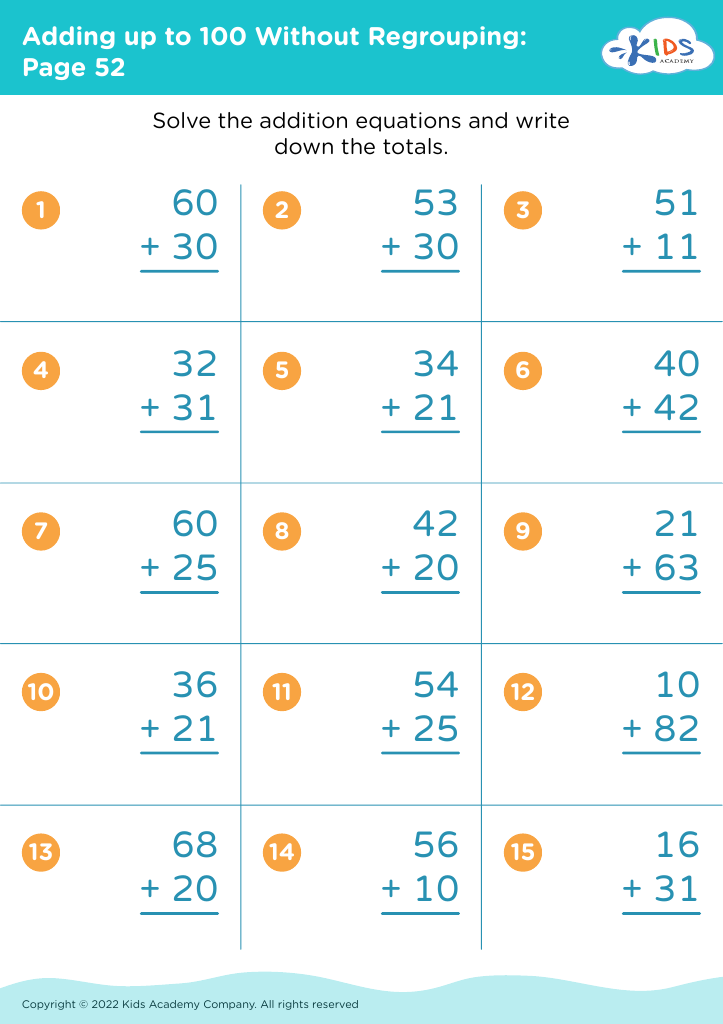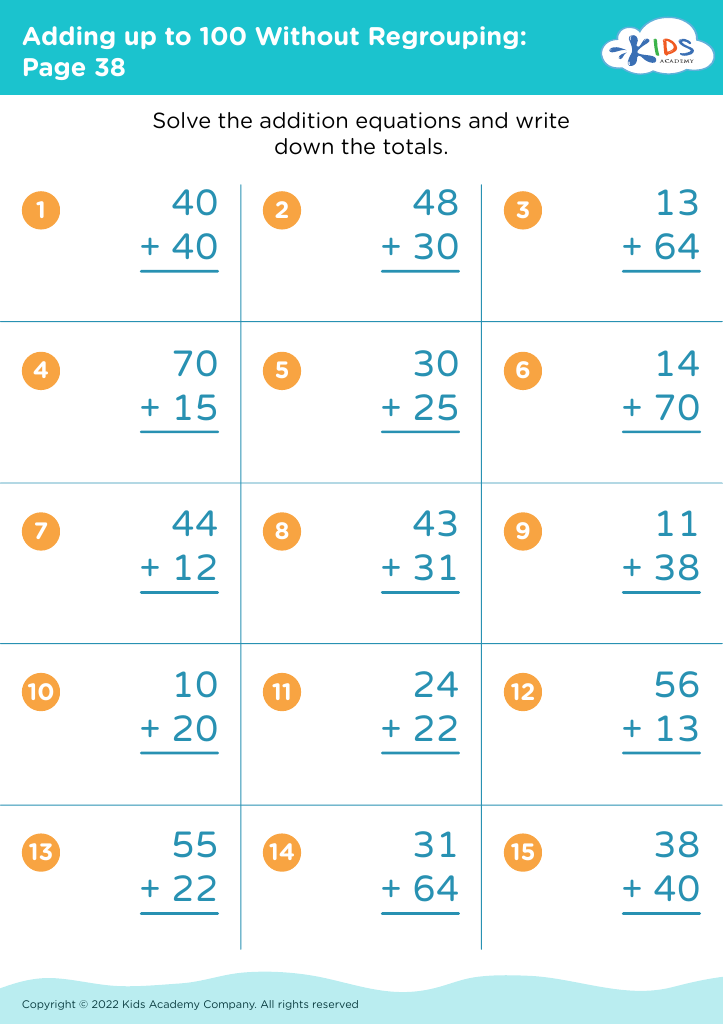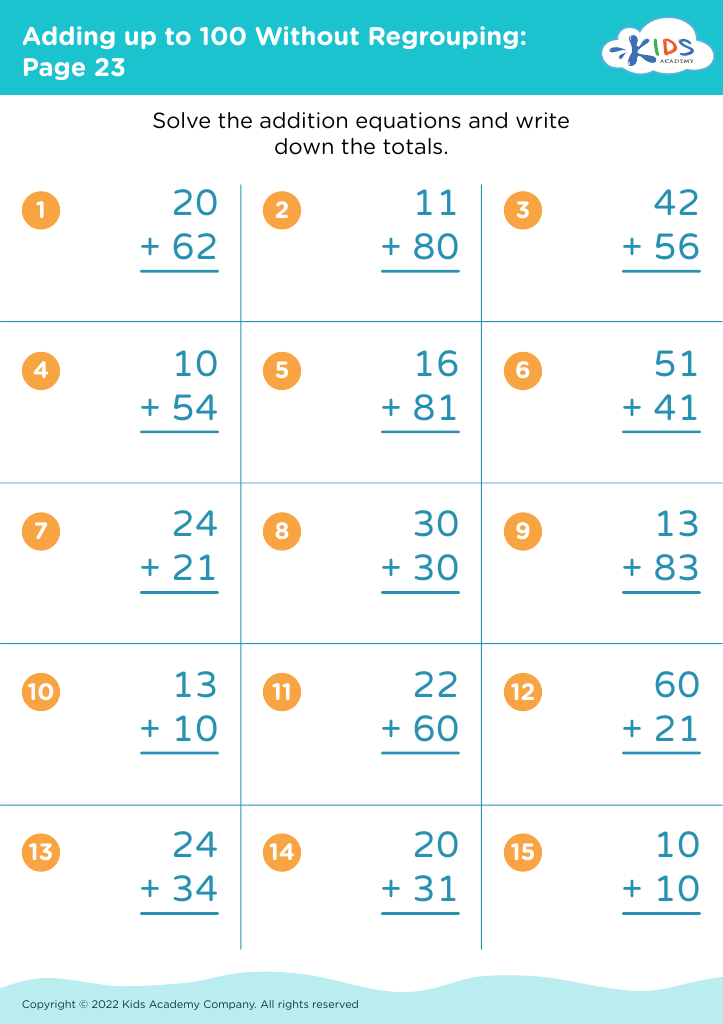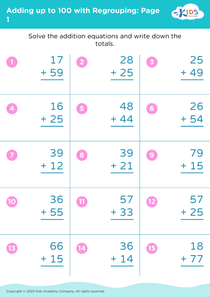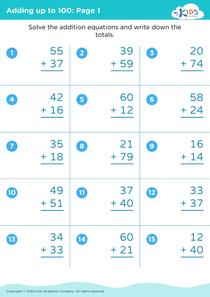Understanding fractions Adding up to 100 Without Regrouping Worksheets for Ages 5-8
19 filtered results
-
From - To
Explore our "Understanding Fractions: Adding Up to 100 Without Regrouping" worksheets, designed specifically for children aged 5-8. These engaging resources help young learners grasp the basic concepts of fractions through fun, hands-on activities. With our carefully crafted exercises, kids will practice adding fractions in a straightforward manner, building their confidence and math skills. Each worksheet is aligned with educational standards and encourages critical thinking while fostering an early love for mathematics. Perfect for home or classroom use, these worksheets, accompanied by colorful illustrations, make learning fractions enjoyable and effective. Download now and watch your child's understanding of fractions flourish!
Understanding fractions, particularly concepts like adding fractions that sum up to 100 without regrouping, is crucial for children aged 5-8 for several reasons. First, this foundational skill builds mathematical reasoning and critical thinking. As children learn to add fractions—like combining 1/4 and 3/4—they gain confidence and develop a deeper understanding of parts and wholes, which is essential for everyday arithmetic.
Secondly, mastering these concepts early on helps reduce anxiety when faced with more complex math in later grades. It establishes a strong base for understanding not just fractions but also concepts like percentages, ratios, and measurements, which become increasingly important in higher math.
Moreover, understanding fractions integrates well with real-life applications, such as cooking, sharing, or budgeting, making math relatable and practical. Engaging parents in this learning process ensures a supportive environment where children can practice and reinforce their skills.
Finally, incorporating fractions into everyday discussions fosters communication skills and encourages parents to become involved in their children's education, strengthening the home-school connection. By recognizing the significance of these concepts, parents and teachers can help nurture well-rounded learners equipped for future academic success.
